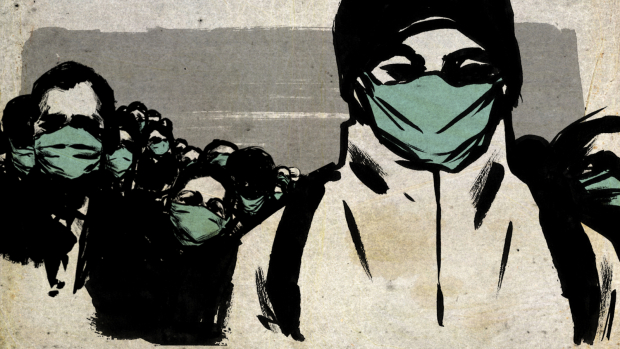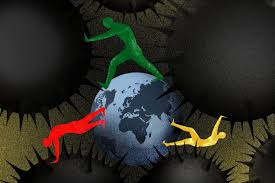Viruses Shape the Human World

Viruses Shape the Human World
Humans believed that they were at the top of the food chain, so the saber-toothed tiger became extinct, the New Zealand Moa disappeared, and the number of endangered giant animals is endless. However, the new coronavirus tells humans that they themselves will become prey one day. Many modern infectious diseases are caused by viruses, including new coronary pneumonia and AIDS, as well as the flu that broke out from 1918 to 1920. That flu caused more deaths than those in World War I. When Europeans invaded the United States, they brought smallpox, measles and influenza viruses without their knowledge, leading to the death of a large number of indigenous people. This may be one reason why Europe was able to colonize the Americas.
From ancient times to the present, the impact of viruses on life on earth has not only brought tragedy to a single species. Although the study of viruses began with investigations of a strange group of pathogens, the latest research puts them at the core of the strategy of explaining genes, which is both selfish and unselfish.
There are too many types of viruses to imagine, and they are everywhere. It is clear that from the beginning of life, viruses have increasingly affected the evolution of all microorganisms. The most significant way the virus proves the blindness and cruelty of natural selection. The virus has created a group of intelligent bipedal mammals-humans, which are both a threat and an opportunity that are unpredictable.
The best explanation for “virus” is “a combination of genetic material that uses the metabolism of another organism to reproduce”. They are the purest kind of parasites: apart from the genetic code, everything about them comes from the host. They stripped life to only bare information and its copies. If there is anything worth learning about the rich variety of viruses, it is that their survival strategies are really very successful.
- Prevent Coronavirus Spreading With Right Mask: 3 Points to Know
- Steps to help prevent the spread of COVID-19 if you are sick
- Test Kit for Coronavirus: SARS-CoV-2 Nucleic Acid Detection Kit (Rapid PCR Fluorescence Method)
- Symptoms (COVID-19)
- How does ZeroVirus protect us from virus?
Viruses are everywhere in the world. An analysis of seawater found that there are 200,000 kinds of viruses in the seawater, but this is not all. Some studies have found that one liter of seawater may contain 100 billion virus particles, and the number of viruses in one kilogram of dry soil may be 10 times this number. According to calculations, there may be 10 to the 31st power of viruses in the world (that is, there are 31 zeros after 1), far more than the sum of all other creatures on the earth.
As we all know, there are usually many different types of viruses, which have been adapted to attack every existing organism. One of the reasons why viruses are the driving force of evolution is that they carried out a merciless massacre and mutated during the massacre-this is especially obvious in the ocean. In the ocean, viruses endanger one-fifth of single-celled plankton every day. From an ecological point of view, viruses promote species diversity by reducing the number of species to make room for rarer organisms. The more common a creature is, the more likely a virus that specifically attacks it will develop into a plague and control the creature.
The tendency of viruses to cause plagues promotes biological evolution, because it prompts the virus’s prey to defend itself, and often has broader consequences. For example, there is a saying that the reason a cell deliberately destroys itself is that its sacrifice reduces the viral load of nearby closely related cells. In this way, its genes are able to replicate in neighboring cells and are more likely to survive. This selfless self-destruction is a prerequisite for cells to come together to form complex organisms such as pea plants, mushrooms, and humans.
Another reason why viruses have become the driving force of biological evolution is that they have a transmission mechanism for genetic information. The genomes of some viruses are eventually integrated into the host’s cells and then passed on to the host’s offspring. 8%-25% of the human genome should be derived from viruses. However, these virus genes themselves may be hijacked by the host in turn, and their genes also have new functions. For example, mammals have the ability to give birth to offspring because their genes derived from viruses have been modified so that mammals can grow placenta. Even the formation of the human brain is partly due to viral activities in the human body, which promote different kinds of neurons in the human body.

The most fascinating thing about evolution is that the continuous, irreconcilable, and disorderly competition within and between organisms produces complex results, which is surprising. In fact, biological evolution has given you the ability to read and understand the text of this article, to a certain extent due to swarms of small viruses. Viruses may have existed since life first appeared on Earth about 4 billion years ago. This principle is still in operation, and the action of the virus is far from stopping.
In responding to and exploiting the threats posed by viruses, mankind’s unique and virus-shaped consciousness has opened up new ways. This starts with the miracle of vaccines, which can deploy defenses before pathogens attack. Smallpox claimed the lives of 300 million people in the 20th century, and thanks to the vaccine, the plague ended. Polio is also expected to be eliminated. The new research triggered by the new crown pneumonia epidemic will enhance the detection capabilities of the virus, enhance the response capabilities of various institutions and groups, and raise the defense against the virus to a new level.
Another advance that mankind has made in dealing with viruses is to rely on the tools of manipulating special features, which stems from people’s understanding of viruses and defense methods. Early bioengineering relied on restriction endonucleases-a type of molecular scissors. Bacteria used these molecular scissors to cut the sequence of viral genes, and biotechnologists used them to move genes. The latest biotechnology uses a more precise antiviral mechanism to edit gene sequences one by one, namely CRISPR.
The natural world is not kind. Viruses cannot exist, and the idea of a virus disappearing is meaningless. In any case, the amazing diversity of life depends on viruses. Viruses are not only the source of death, but also the source of enrichment and change. It is also incredible that in the future world, viruses are expected to become a new way for humans to improve their understanding of themselves, and the number of human deaths caused by viruses is also decreasing.
